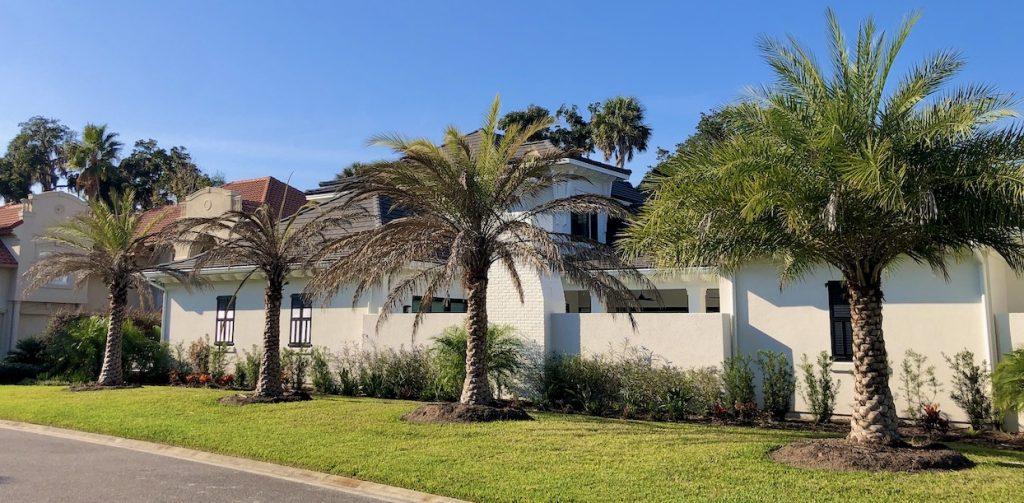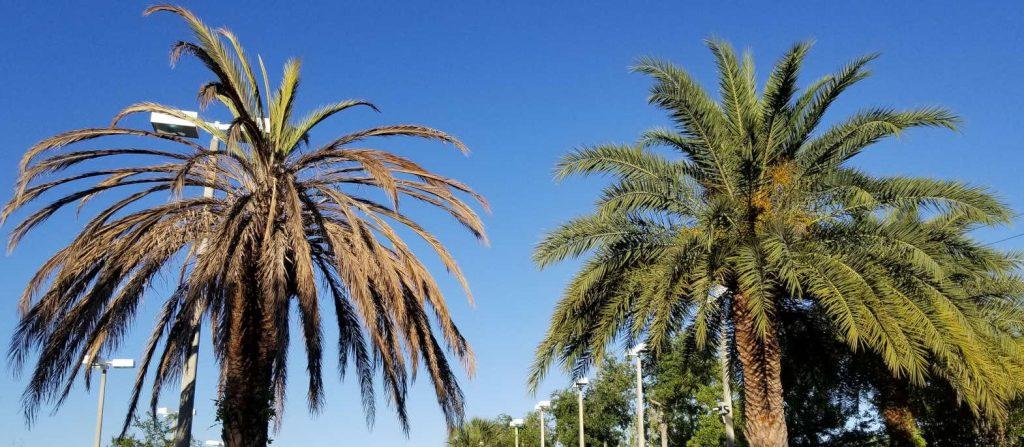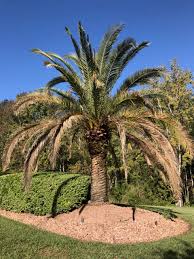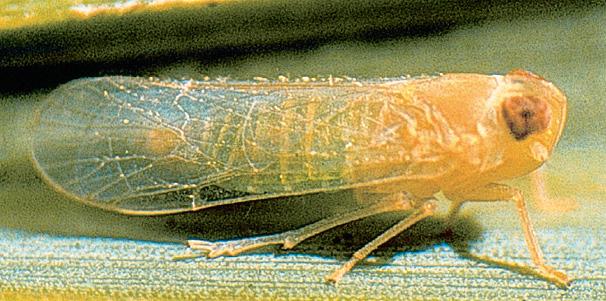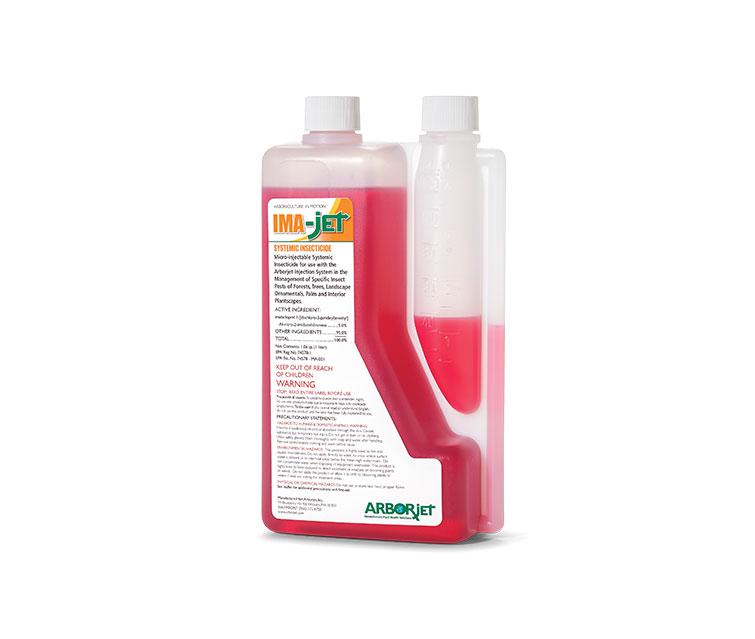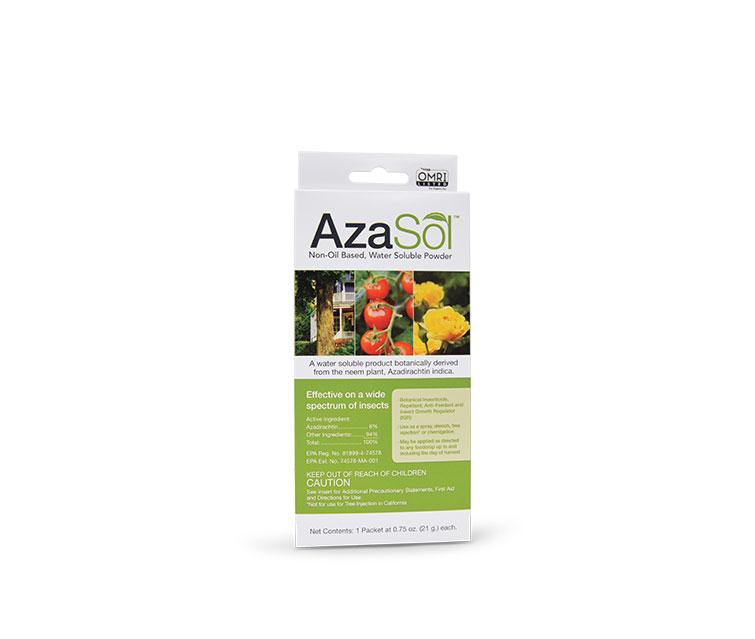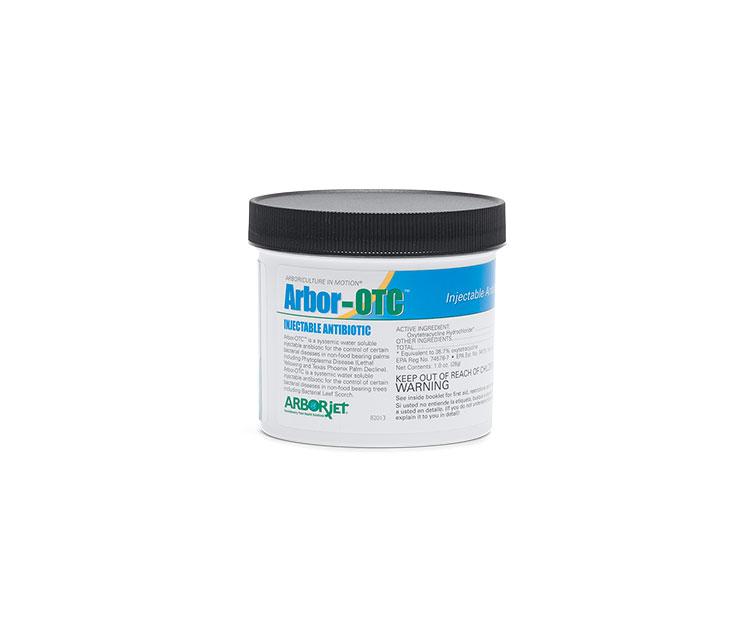Lethal Bronzing
Lethal Bronzing (also known as Texas Phoenix Palm Decline) is caused by Phytoplasma palmae (a mollicute similar to bacteria, but lacking a cell wall) that is closely related to Palm Lethal Yellowing. Lethal Bronzing was first described in 1980 in Texas, and later reported in Hillsborough County, FL in 2006. Since then, the disease has spread throughout Florida, mostly around the central part of the state. The specific vector of Lethal Bronzing is thought to be the American palm cixiid, Haplaxius crudus,. Phytoplasmas infect the phloem, the vascular tissue that moves carbohydrates from leaves to the roots.
As its former name implies, Lethal Bronzing infects Phoenix species. In Texas, the disease was reported to kill Phoenix canariensis (Canary Island date palm) and P. dactylifera (date palm) in as little as 4 months. Currently there are 10 confirmed hosts of Lethal Bronzing. In Florida, host range includes Phoenix sylvestris (Sylvester palm), P. canariensis, P. dactylifera, P. roebelinii (pygmy date palm), Sabal palmetto (sabal palm), Syagrus romanzoffiana (queen palm), Adonidia merrillii (Christmas palm), Bismarckia nobilis (Bismark palm), Livistona chinensis (Chinese fan palm), and Carpentaria acuminata (Carpentaria palm) (Bahder, 2017).
Download our guide on our Lethal Bronzing treatment program here
Common Symptoms
Symptoms include fruit drop, necrosis of inflorescence, bronzing of lower foliage which progresses upward, subsequent spear leaf collapse and death.
Treatments
We recommend a two-part treatment of IMA-jet® or AzaSol® to deal with the leafhopper vector and Arbor-OTC® to deal with the phytoplasma disease agent every 180 days. This method provides excellent protection on our studies held in 2017.
It is also recommended to apply PHOSPHO-jet™ to help control any secondary disease pathogens and PALM-jet Mg™ to provide needed nutrients for overall plant health and vigor.
Download our guide on our Lethal Bronzing treatment program here
When To Treat
Treat every 180 days for best results.
References And Photo Credits
Lethal Bronzing symptoms on Sylvester palms image by Advanced Tree Care
Lethal Bronzing symptoms on sabel palm; image by University of Florida Extension
Lethal Bronzing symptoms on Canary Island date palm; image by University of Florida Extension
American palm cixiid adult; image by University of Florida Extension

